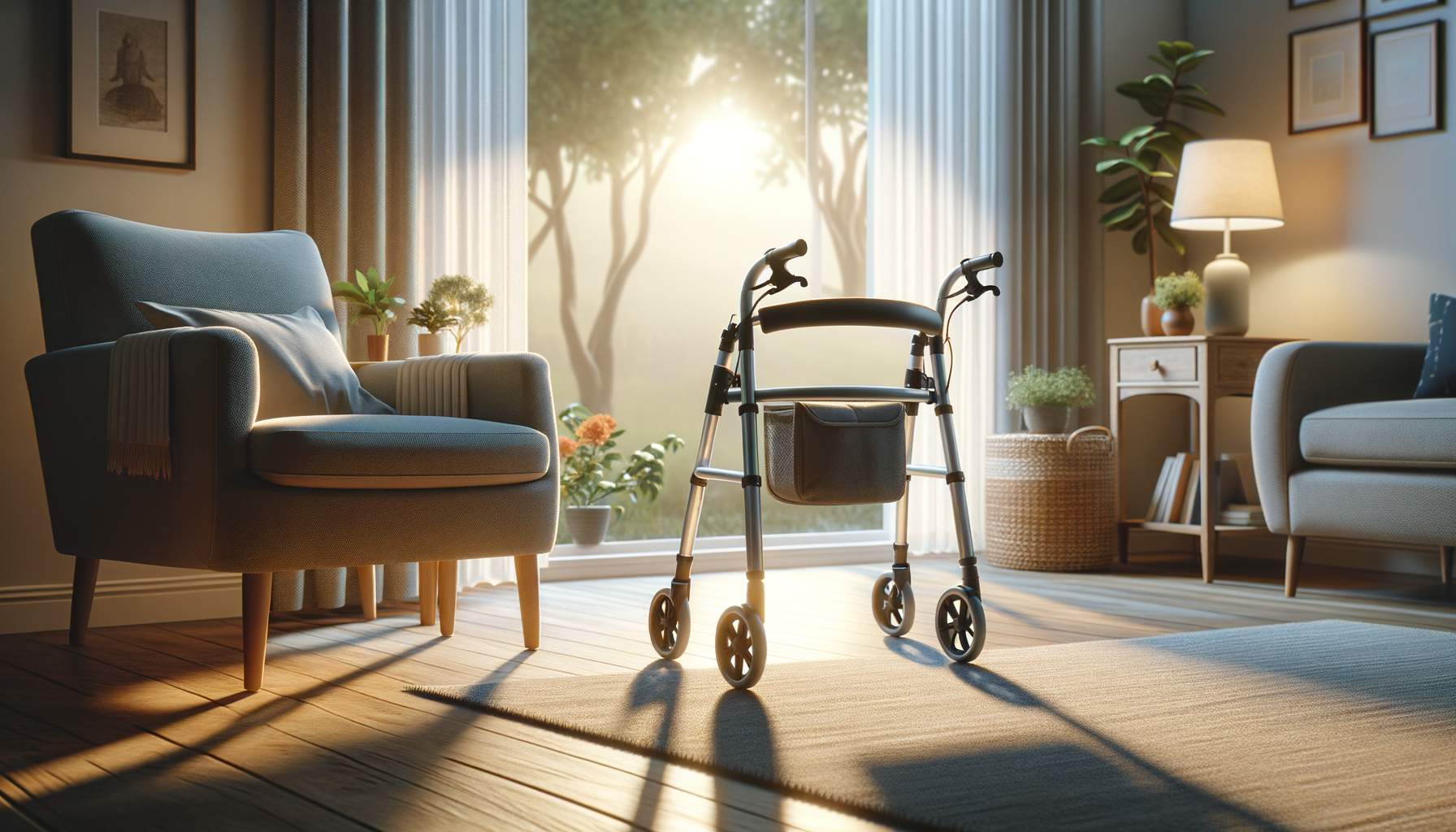Understanding the Role of Walkers in Elderly Mobility
As individuals age, maintaining mobility can become a significant challenge due to various health conditions such as arthritis, osteoporosis, or simply the natural aging process. Walkers are invaluable tools that provide the necessary support to help the elderly maintain their independence. These devices are designed to offer stability, balance, and confidence, enabling seniors to move around safely. Walkers come in various models, including standard walkers, two-wheel walkers, and four-wheel walkers, each catering to different mobility needs.
Standard walkers are typically lightweight and require the user to lift and move them forward, making them suitable for individuals with sufficient upper body strength. Two-wheel walkers, on the other hand, have wheels on the front legs, allowing for easier movement without lifting. Four-wheel walkers, often referred to as rollators, include a seat and brakes, providing the highest level of mobility support. They are ideal for those who need to rest periodically while walking.
Choosing the right walker involves considering the user’s physical condition, lifestyle, and environment. For instance, a standard walker may be appropriate for indoor use, while a rollator might be better suited for outdoor activities. By understanding the specific needs of the elderly, caregivers and family members can select the most suitable walker to enhance their loved one’s quality of life.
Key Features to Consider When Choosing a Walker
When selecting a walker for an elderly individual, several key features should be considered to ensure it meets their needs and preferences. One of the primary aspects is the adjustability of the walker. It is crucial to choose a model that allows for height adjustments to accommodate the user’s stature, ensuring comfort and proper posture while using the device.
Another important feature is the weight capacity of the walker. Most walkers support up to 250 pounds, but there are models designed for higher weight capacities, which are essential for individuals who require additional support. Additionally, the material and build quality of the walker should be durable and sturdy, offering long-term reliability.
For those who plan to use the walker outdoors, features such as large wheels and a sturdy frame can enhance stability on uneven surfaces. Brakes are also a critical component, particularly for rollators, providing safety and control during use. Storage options like baskets or pouches can be beneficial for carrying personal items, making the walker more practical for everyday use.
By carefully evaluating these features, individuals can select a walker that not only meets their functional needs but also enhances their overall mobility experience.
The Psychological Impact of Using Walkers
While walkers are primarily designed to assist with physical mobility, they also have a significant psychological impact on elderly users. The ability to move independently can greatly enhance an individual’s self-esteem and confidence. For many seniors, the loss of mobility can lead to feelings of isolation and dependence, which can affect their mental health.
By using a walker, elderly individuals can regain a sense of control over their lives, participating in social activities and maintaining connections with family and friends. This increased social interaction can reduce feelings of loneliness and depression, contributing to a more positive outlook on life.
Moreover, the use of a walker can encourage elderly individuals to engage in physical activities, promoting better health and well-being. Regular movement and exercise can improve cardiovascular health, strengthen muscles, and enhance overall physical fitness. As a result, walkers not only support mobility but also play a vital role in maintaining mental and emotional health.
Understanding the psychological benefits of walkers can help caregivers and family members appreciate the broader impact these devices have on the lives of the elderly, beyond their physical support.
Innovations in Walker Design and Technology
The field of mobility aids is continuously evolving, with innovations in walker design and technology enhancing their functionality and user experience. Modern walkers are now incorporating advanced features such as ergonomic grips, lightweight materials, and foldable designs for easy transport and storage.
Some walkers are equipped with smart technology, including sensors and alarms that alert users and caregivers to potential falls or other emergencies. These features can provide an added layer of safety and reassurance, especially for those with cognitive impairments or balance issues.
Additionally, there are walkers designed with aesthetics in mind, offering a range of colors and styles to suit personal preferences. This focus on design can help reduce the stigma associated with using mobility aids, encouraging more elderly individuals to embrace these tools.
As technology continues to advance, we can expect further innovations in walker design, making them even more effective and user-friendly. These developments have the potential to significantly improve the quality of life for elderly individuals, ensuring they remain active and independent for as long as possible.
Conclusion: Enhancing Quality of Life Through Mobility
Walkers are more than just mobility aids; they are essential tools that empower elderly individuals to maintain their independence and improve their quality of life. By providing stability, support, and confidence, walkers enable seniors to engage in daily activities, socialize, and enjoy a more active lifestyle.
Choosing the right walker involves careful consideration of the user’s physical condition, lifestyle, and personal preferences. With advancements in design and technology, modern walkers offer a range of features that cater to diverse needs, ensuring that every individual can find a suitable option.
Ultimately, walkers play a crucial role in promoting both physical and psychological well-being, allowing elderly individuals to live life to the fullest. As we continue to innovate and improve these devices, we can look forward to a future where mobility aids become even more integral to enhancing the lives of seniors worldwide.




Leave a Reply